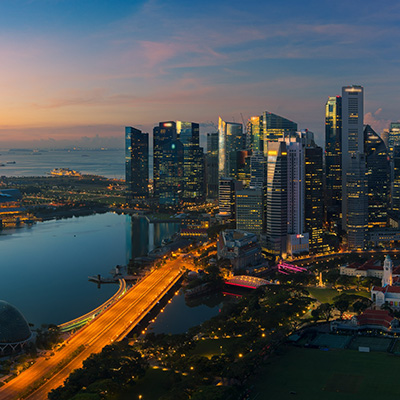AS we venture into 2021, organisations will be looking for ways to recover from the pandemic and serve new consumers with reimagined business models. Just like how IT helped organisations survive the crisis, technology is also positioned to serve as the foundation for the new normal.
Here are four ways that technology will change over the new year:
In 2021, I see more POCs (proofs of concept) moving into production. Better tools and turnkey solutions for specific use cases from cloud providers are making it easier for teams with limited skill sets and resources to build and run complex models. We will also see more partners provide data-centric services to help address skills gaps and accelerate development at the organisation level.
Prediction 1: Privacy concerns yield new solutions
Driven by the pandemic, the need for widespread contact tracing will amplify concerns about data privacy. As we share more information online, we are becoming more conscious of what happens to our data. Is it shared? Is it secured? How can it be used? The Netflix documentary The Social Dilemma has provided the general population with even more insight around how deeply organisations leverage and track our data. As concerns rise, governments are also responding with a mix of regulatory actions that businesses need to integrate into current security strategies to avoid hefty fines and penalties.
However, because there is so much concern about misuse, many people refuse to even install potentially beneficial government apps. Those same concerns impact how people view the use of workplace solutions that track time, record location and use biometric security. With the increasing reliance on applications for work, finances and healthcare, businesses need to focus on both protecting data and ensuring that owners can control the use of their personal data.
Innovators have an opportunity in 2021 to develop solutions that regulate data privacy within devices and applications, while adjusting to the growing number of local, regional and national privacy regulations, like, PDPA in Singapore and GDPR in Europe.
Prediction 2: Automation revolutionises contact tracing
Covid-19 has touched every industry and geography. Initially viewed as a sprint, to be over quickly, measures that we thought would be short-term are now becoming the new normal.
One of the strongest tools that communities can use to manage disease spread is contact tracing. Initially, contact tracing processes were manual, cumbersome and costly - manageable for the short term, but not sustainable for the long term.
Smartphones will play a larger role in contact tracing in 2021, as more and more applications come online that can integrate with smartphone data. Apple and Google started the trend early on by leveraging mobile data. We will begin to see more providers entering the market with solutions targeted at business with stronger security and industry-specific features. We have already seen our customers successfully repurpose existing Internet of Things (IoT) and machine learning technology for contact tracing. Governments, like Singapore's, are also leveraging technology, including QR codes, to track cases and notify persons who may have been exposed.
Prediction 3: Remote workers change the face of the modern office
Remote workforces saved businesses at the height of the crisis by staying home and staying productive. For many organisations, the work-from-home model is here to stay, and that introduces a whole range of opportunities and risks. As remote working goes mainstream, organisations will have to ask:
- How do we equalise the experience for in-office and remote employees?
- How do we make video interaction more personal?
- How do we ensure employees are safe? What are our occupational health responsibilities?
- How do we continue to drive innovation?
- How do we adapt brainstorming, team-building and other traditionally face-to-face activities?
All of the above are opportunities for innovation. Things like augmented reality and virtual huddle rooms can create shared workspaces for collaboration and whiteboarding. Occupational health and safety (OHS) compliance training can be performed virtually. IoT and automation can be integrated to help with safety audits.
Some of these challenges will be solved organically as people stumble across solutions. In 2021, businesses will seize this opportunity to develop technology to enhance remote workplaces. I expect to see a greater volume and sophistication of integration between cloud systems to create experiences that more closely mirror the traditional office.
Prediction 4: Smart cities come to life
There are pockets of Smart City innovation all over the world. The term "smart city" is just a fancy way to describe the combination of technology and data to do things smarter - safer, less expensive, more efficient. IoT is a driving enabler for smart technology and is growing rapidly. Asia-Pacific represents about a third of the global IoT market.
As businesses and governments become more familiar with IoT, expect to see more smart solutions. The United States has been involved in POCs with firefighters who want to use IoT devices to stream real-time video to a centralised control hub where fire-fighting decisions are made and communicated. Other organisations are interested in finding out pond capacities and drainage intervals for optimal ecological outcomes.
In 2021, smart cities will get a boost from data projects that involve moving from POC to production. As these data projects go live, governments will have a better view of how they can use data and technology, like IoT and 5G, to build more resilient cities.
- The writer is CTO, Asia-Pacific and Japan, at Rackspace Technology
© 2021 Singapore Press Holdings
This article was written by Emma Pudney from The Singapore Business Times and was legally licensed through the Industry Dive publisher network. Please direct all licensing questions to legal@industrydive.com.![]()








